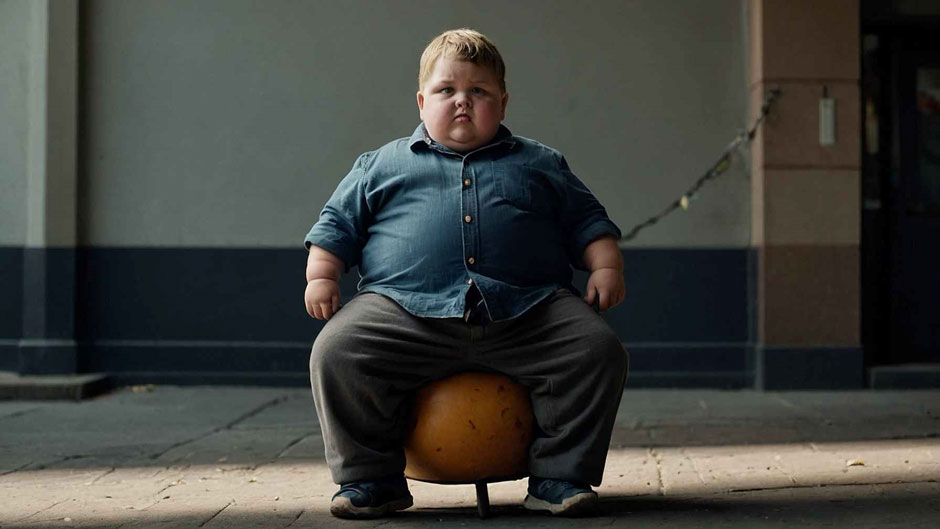Table of Contents
- Childhood Obesity as a Social Problem
- Child Obesity and Healthy Eating
- Child Obesity Effects on Mental Health
- Child Obesity Epidemic in America
- Is Childhood Obesity a Public Health Issue?
- How We Can Control Childhood Obesity
I’ll break up each section so that it seems conversational, as though we’re having a discussion about this important topic.
We’ll discuss the societal implications of childhood obesity, the role of sensible dieting, the effects on mental health, the pandemic in the United States, and whether or not it’s a general medical concern.
Making the data easy to understand and visually appealing is the goal, especially for younger audiences. Let’s understand childhood obesity is most common among.
Childhood Obesity as a Social Problem
When we talk about adolescent corpulence, we are talking about more than just children gaining weight—we are talking about how our society creates the environment in which they grow up.
Imagine living in a world where fast food is more accessible than a fresh apple or when spending time outside is replaced by spending hours in front of a screen.
These are not merely individual decisions; the environment we live in influences them. Families, communities, and schools are all involved.
Presuming that kids are surrounded by unhealthy food options or lack secure play areas, it should come as no surprise that obesity becomes a common problem. Consequently, childhood obesity is a social as well as a health problem.
It demonstrates our way of life and our priorities.
Child Obesity and Healthy Eating
Now let’s discuss the part that eating a nutritious diet plays.
Building a house is analogous to this; the establishment is the food we eat.
If we continue to fuel our bodies with poor diets that are heavy in fat, sugar, and empty calories, we’re not giving ourselves the best chance to grow and mature. For youngsters, this is especially more important because their bodies and minds are still developing.
Teaching children to value whole grains, veggies, and natural goods is important for more reasons than just keeping them in check; it also helps to position them for long-term health.
There’s a caveat, though: adopting good eating practices has to start at home.
Youngsters are more inclined to model healthy eating habits after their parents and other adult caregivers.
It’s about transforming healthy eating from the exception to the rule in our culture.
Also Read – Why Does Exercise Increase Energy Levels? – Exercises For Stamina And Speed (2024)
Child Obesity Effects on Mental Health
Obesity can also have a major negative effect on a child’s body and mind. Imagine growing up and experiencing ongoing bullying at school due to your weight.
Such an event might lead to feelings of guilt, low self-esteem, and even melancholy. Moreover, it goes farther than that. Obese children may shy away from social situations for fear of being picked on or made fun of.
Because of this solitude, they could find it increasingly harder to build healthy friendships and a positive self-image. Therefore, it’s important to keep in mind that juvenile obesity is not just a real problem; it’s also closely linked to both mental and familial prosperity.
Child Obesity Epidemic in America
In America, being overweight as a young person has become a stigma. This suggests that it is expanding swiftly and affecting a growing number of kids on a regular basis. It’s a terrible concept, but it makes sense at the same time.
There are several reasons for this.
First of all, junk food is often easier to get hold of and less expensive than healthier alternatives. Additionally, children these days spend more time indoors, sometimes seated in front of a screen, than they do playing outside.
Not to mention the promotion of sugar-filled beverages and kid-focused snacks.
When these factors combine, obesity not only becomes prevalent but also expected.
The data tells the tale: a significant proportion of American children are currently perceived as being overweight, and this is something that should concern us all.
Is Childhood Obesity a Public Health Issue?
With everything we’ve looked at, it’s clear that childhood obesity is a general medical concern rather than just a personal one.
What does that suggest?
This suggests that obesity is a problem that affects everyone, not just those who experience it.
When a large number of kids are handling obesity, it strains healthcare systems, raises the risk of chronic diseases like diabetes, and may even have negative long-term effects.
For this reason, communities, schools, and governments must all take action. It is necessary to create environments in which making wise choices is made easier.
Some examples of these environments include providing healthier school snacks, ensuring that children have secure areas to play, and limiting the promotion of unhealthy food sources to young people.
Realizing that tackling childhood obesity as a public health concern would require concerted action is essentials.

How We Can Control Childhood Obesity
Childhood obesity is a severe issue that has gotten worse over time and requires considerate and careful attention. However, don’t worry—there are actually ways to handle it.
What if we discussed some of the most important steps we can take to help children live healthier lives?
1. Encourage Healthy Eating Habits
The first, and probably most important, step is to strengthen the tendency toward smart dieting.
We all know how much kids love snacking, and how easy it is for them to reach for chips or candy.
But what if we could make healthy cuisine just as exciting?
We can start by feeding them more fruits, veggies, and whole grains in their meals. For breakfast, try oatmeal mixed with fresh fruit instead of sugar-filled cereals. Conversely, you could try substituting milk or water for soft drinks.
Instead of eliminating all of their favorite goodies, the idea is to balance them out with wholesome options. When their food tastes good and is pleasurable, kids are more likely to stick to a healthy diet.
2. Promote Regular Physical Activity
Children typically enjoy being active, whether it’s running, playing, or simply moving around the living room.
Encouragement of regular physical activity is therefore a crucial additional tactic for lowering obesity. It’s important to encourage children to participate in physical activity in ways that they find enjoyable rather than pressuring them to adhere to a rigid fitness regimen.
Engaging in activities such as playing tag, riding, or even taking family walks can have a significant impact.
The secret is to regularly include physical activity into their daily schedule. If kids find exercise enjoyable, they will want to do it more frequently.
Also Read – Caffeine And Stomach Issues (2024)
3. Limit Screen Time
Whether it’s watching TV, playing video games, or browsing through a tablet, we are all aware of how much time kids spend in front of screens these days.
Although technology provides many benefits, an excessive amount of time spent in front of a screen can lead to a sedentary lifestyle, which is a significant contributing factor to obesity.
We can help by reducing the amount of time they spend in front of devices every day. Getting outside to play or taking up an activity that requires movement might be beneficial for them.
It has to do with striking a balance between screen time and various activities that maintain their vibrancy.
4. Educate About Portion Control
Portion control is often disregarded, despite being a critical component in the fight against obesity.
It is easy for kids (and adults, too) to eat too much, especially when they are served large portions.
One of the best ways to teach kids about portion sizes is to demonstrate to them how much food is actually necessary to feel satisfied and full. For example, instead of serving a large plate of spaghetti, we may serve a smaller piece with veggies as an accompaniment.
By teaching kids about portion control, we hope to instill in them lifelong healthy eating practices.
5. Be a Role Model
Children learn a lot by observing the adults in their environment.
If they observe us make healthy decisions, they are more likely to do the same. This suggests that we should be conscious of our own tendencies as parents, guardians, or other parental figures.
Youngsters will observe this and are more likely to model our low screen time, physical exercise, and healthy diet after us.
Being a good role model means putting in the effort to live a healthy lifestyle so that kids perceive it as normal and achievable. It is not the aim to be flawless.
6. Create a Supportive Environment
Finally, creating a supportive environment is essential to helping children manage their weight.
This means not just at home but also in networks and schools. Schools can provide healthy lunch options and traditional classroom learning, but networks can provide kids with safe places to play and be active.
We may support children at home by encouraging them in their pursuits, celebrating their successes, and standing by them during difficult times.
When they feel encouraged, kids are more likely to follow through on their excellent decisions.
Conclusion
Reducing youth obesity has little to do with implementing remarkable short-term changes.
It all comes down to making gradual, steady progress toward better behaviors.
Through encouraging sensible eating, promoting physical activity, capping screen time, modeling portion management, setting a positive example, and creating stable environments, we can help kids develop the habits necessary to stay healthy and happy.
Remember that the goal is to integrate healthy decisions into daily living.
Read us on Medium.




